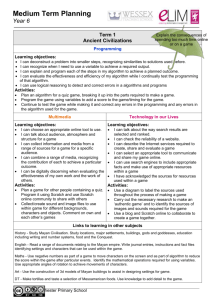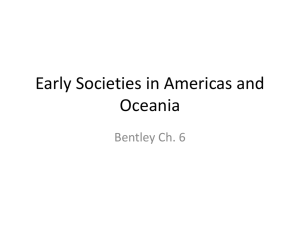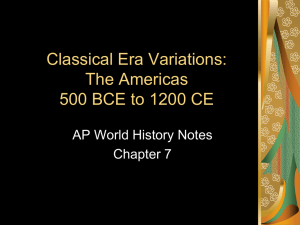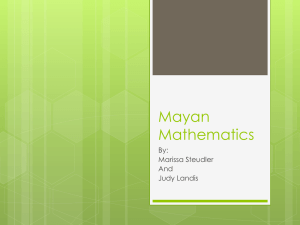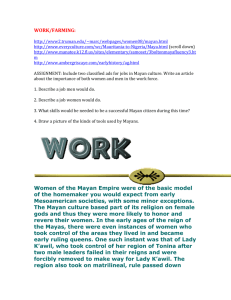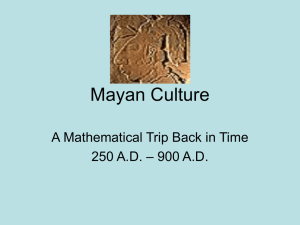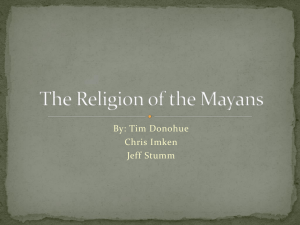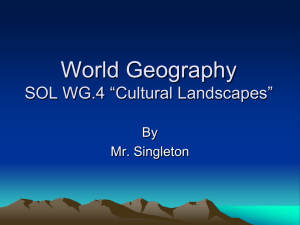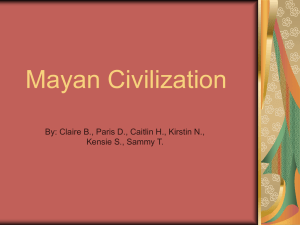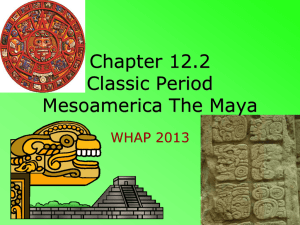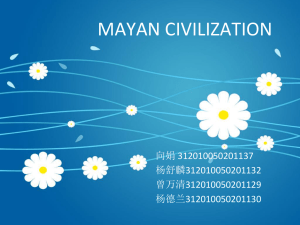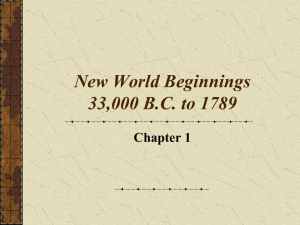12.1
advertisement
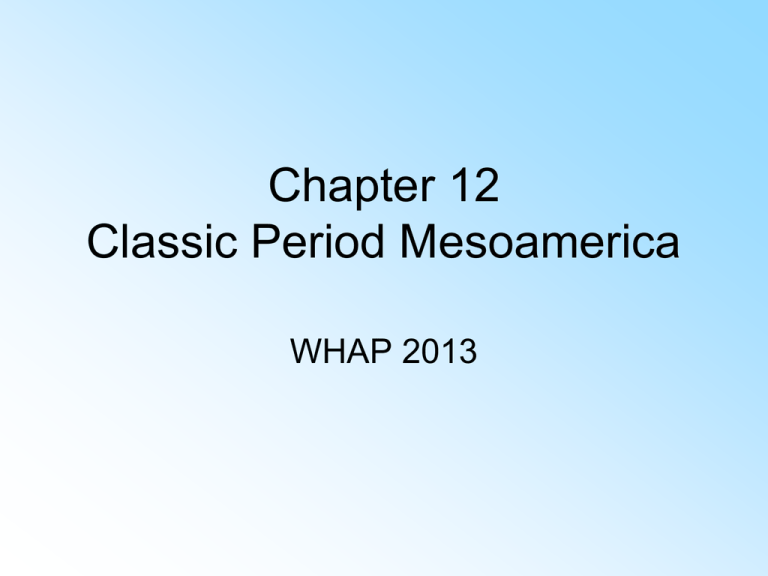
Chapter 12 Classic Period Mesoamerica WHAP 2013 • • • • • Society Political institutions Inventions Culture/religion Economic system Introduction/Review • “Mesoamerica” means “Middle America” in Greek. • Chapter 4 introduced “pre-classical” Mesoamerican civilizations. • Olmecs in Mexico 1200 - 400 BCE • Chavin in Peru 900 - 250 BCE • “Classic civilizations” built on great traditions created by earlier cultures Teotihuacan 100 BCE - 750 CE Olmec 1200 BCE - 400 BCE Maya 250 CE - 900 CE Human Sacrifice • All Mesoamerican groups practiced human sacrifice • A sacred duty towards the gods and essential to the well being of society. • Over 60 victims found during the excavation of the Temple of Quetzalcoatal in Teotihuacan Teotihuacan • First civilization of Classic Period • Founded 100 BCE • 450 - 600 CE largest city in the Americas with 125,000 to 200,000 inhabitants. • Religious and commercial center. • Teotihuacan Overview Politics • Ruled by an oligarchy = from the Greek words "ὀλίγος" "a few” and the verb "ἄρχω” "to rule, to govern, to command". • Such states are often controlled by a few prominent families who pass their influence from one generation to the next. • Oligarchy = Rule by a few Geography • Historians believe Teotihuacan was ruled by alliances of wealthy families, or by weak kings who were controlled by wealthy families Economy • Subsistence farming and regional trade • Main trade items obsidian stone and pottery. • 2% of population made obsidian weapons and tools • history of ceramics Economy • 2/3 of population worked in agriculture. • Swamps drained • Irrigation and container gardens used • Invented Chinampas - artificial islands used to create yearround agriculture. Religion • Polytheistic • Sun, moon, stormgod. • Quetzalcoatl feathered serpent god of agriculture and art. • Quetzalcoatl Society • • • • • • 4 level society Elites/priests Warriors Craftsmen Peasants Elite families lived in separate housing compounds. Society • Peasants and artisans lived in apartments of stone. • No paintings or statues of rulers have been found. Architecture • Religiously inspired • Large pyramids dedicated to the sun and moon. • Over 20 smaller temples to other gods lined a central avenue. Pyramid of the Moon Built without the wheel, iron tools or draft animals! travel Teotihuacan Education • Without a written language, historians can only guess. • Religion • Trade • Farming • Crafts • ??????????? • Mesoamerican WSU site Military • Weapons included spears, obsidian knives, shields made of woven reeds • Codex - obsidian edged flat club • bow and arrow and throwing spear • Woven armor could include stone tiles War club Military • No walls around city before 500 CE • No murals of military conquest • Not an imperial state • Probably used to expand trade into Mayan region Decline • • • • • • • • 650 CE WE DON”T KNOW WHY! Clues: After 500 CE population declines and walls around city are built. Murals depict a violent time Temples and buildings pulled down religious images defaced Internal conflict or external attack? End 1 Mayan Politics • 250 CE early classic period Mayan Economy Mayan Religion • A • Mayan Religion Mayan Society Mayan Inventions Mayan Art/Architecture/Entertainment Mayan Geography Mayan Education Mayan Military End of the Maya • For some reason the city was abandoned around 1300. • If the Spanish had not made it policy to kill all the Mayan Priests and burn all their books when they arrived in Mexico, we would all have more answers.
